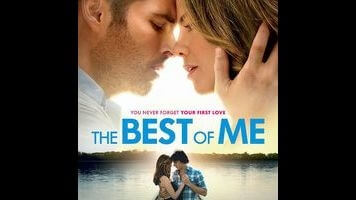If you liked those other Nicholas Sparks movies, you’ll like The Best Of Me

Sunsets, willows, autumn leaves, old barns, tree swings, water towers—default desktop backgrounds, or the mise-en-scène of a Nicholas Sparks adaptation? Sparks’ very specific imprint of tearjerker kitsch—tales of once-in-a-lifetime romance that invariably involve illness or death—comes pre-packed with its own imagery; just add one competent middle-brow director and two or more good looking leads, and voilà!
The Best Of Me is neither the best Sparks adaptation, nor the worst; it’s merely the most recent. Directed by Michael Hoffman (The Last Station), the movie centers on Amanda (Michelle Monaghan) and Dawson (James Marsden), high school sweethearts who are reunited two decades later by the death of a friend who has named them the joint executors of his estate. Dawson is a scruffy, hunky oil rig worker who reads Stephen Hawking bestsellers at lunchtime; Amanda is an unhappy housewife whose husband, Frank (Sebastian Arcelus), takes business calls at the dinner table, goes golfing with his buddies, and generally does the kinds of things that are considered normal in real life, but signify a crumbling marriage on-screen.
While Amanda and Dawson are busy boxing up knickknacks, the movie flashes back to 1993, where she (Liana Liberato) is a rich kid with the unlikely dream of someday becoming a lawyer and he (Luke Bracey, who looks neither like a teenager nor anything like James Marsden) is a smart kid from a family of Depression-era hicks who sit around in waistcoats, playing poker and listening to old-timey music. She badgers him into taking her out for a date while he’s fixing up a vintage pick-up. They eat gelato while sitting on the town water tower, jump off piers into ponds, and bond over the Cowboy Junkies’ cover of “Sweet Jane.”
As the relationship of the young Amanda and Dawson falls apart in one timeline, their older selves drift back together in the other. That’s a fairly simple, maudlin structure, and it remains that way until the movie reaches its over-heated, soapy third act, which throws in an accidental death, an emergency heart transplant, some meth-gang shoot-outs, and assorted other ludicrous twists. One of the quirks of Sparks adaptations—which can either be endearing or irritating—is that they’re incapable of treating romance on its own terms; as far as they’re concerned, it’s not true love unless it’s predestined and somebody gets cancer. They’re romances in the same sense that a cake is a meal.